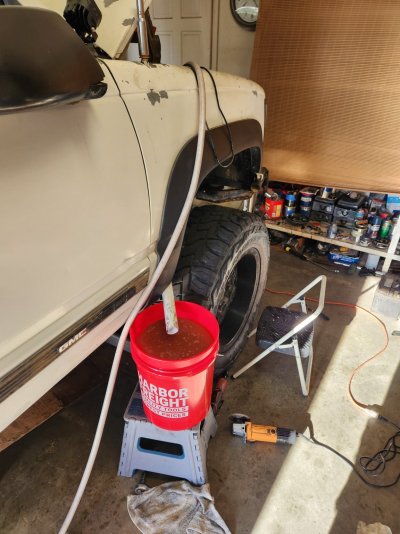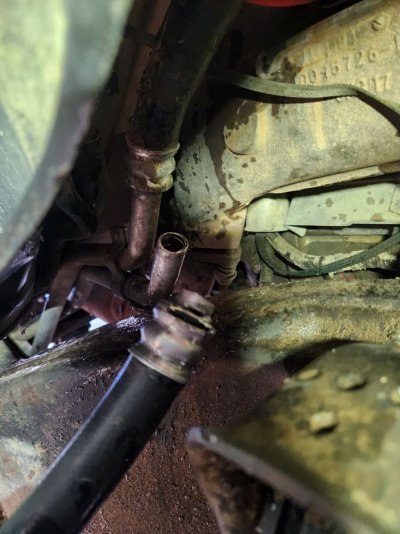Thanks for your nuggets of knowledge! I definitely think the clutch fan will make a difference but want to avoid that if possible cause the dual electric fan coversion probably ran the previous owner $300-$400.
You know, a lot of vehicle owners out there have been sold on the concept of electric fans
by countless magazine articles.
One possible solution to your situation is to use the best bits of factory cooling available
sourced out of the local Treasure Yard, and then help offset the cost of doing so by selling
your used twin fan setup online once removed from service?
I know this seems like a lot of time & effort to properly sort out your cooling system,
but subjecting your engine oil, piston rings, valves, and transmission fluid to the higher
end of the 210-260 range you quoted from the owner's manual is not a good long term
plan. (I seem to remember reading that at a certain point, for every 10°F rise in ATF temps
the useful life of that same fluid was cut in half?)
Not to mention that the higher the cylinder head temps, the sooner the engine will start to
ping & knock, which in turn causes the computer to pull timing out, both lowering power
output & worsening your MPG.
I just looked at the photo of your fan setup, and those 2 fans mounted on a flat surface
that close to the radiator causes sub-optimal air flow through the radiator down the highway.
Those fans are being forced to work uphill at all times. Contrary to all the ink that's been
spilled in the mags over the years, for best results with those aftermarket electric fans it's
sell sell sell! :0)
I noticed once I shut off the engine the temperature always immediately rises higher (e.g it would read 210 before shut off and then almost immediately read 230-240 upon shut off.....is that normal?
Yes it is -- that's expected behavior. Using rough numbers, the small block tips the scale
in the neighborhood of 500 lbs all dressed, and the 454 is on the far side of 600 lbs.
When all is well, between the radiator, exhaust, and airflow past the engine, this mass
of metal will be on average in the neighborhood of 195°. However, once the engine is
shut off and the air stagnates under the hood, thanks to all the stored heat in the engine,
exhaust manifolds, etc., will move into the coolant, with reported temps immediately start
to climb, for all that heat that's banked in that large metal mass is no longer being
constantly removed by the cooling system.
If you happen to run a mechanical water temp gauge you will see this temp rise every
time you shut down. This is only one of the many reasons why it's a poor idea to run pure
water as a coolant. (50/50 water/antifreeze mix is good to 223° unpressurized, but up to
268°F with a 15psi cap?) Even so, lubricants have been proven to work best/last longest
when we get them just over 212°F. (So that moisture will boil off.)
The bottom line is that we can get our fluids too hot, too cold, and just right. Goldilocks
would approve. :0)
Hope this sheds a little more light on the GMT400 cooling subject.
Last edited:







